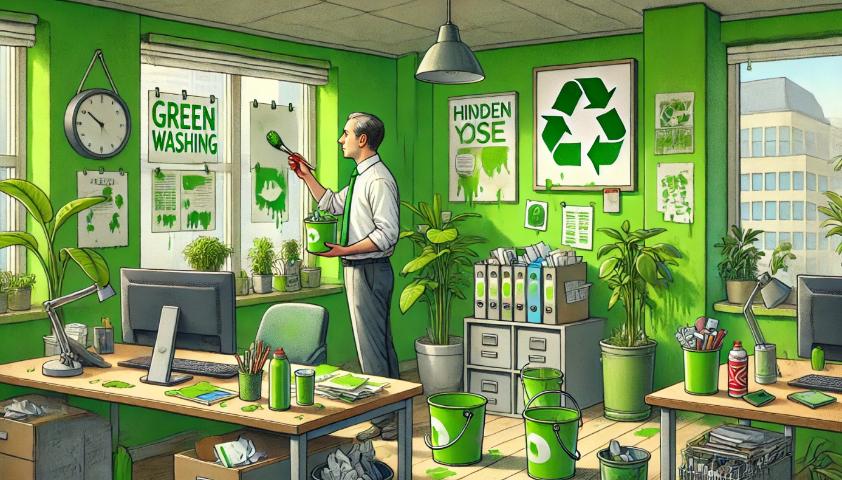Unit 1.3: Business Objectives


CSR chat
Alex: “I don’t understand why a company would go out of its way to increase costs with all this CSR stuff. I mean, shouldn’t they just focus on profit?”
Jamie: “It sounds that way, but CSR actually brings a lot of benefits beyond immediate profit. It helps improve brand reputation, which can increase customer loyalty and even attract more business in the long run which may allow an increase in price or even lower elasticity!”
Alex: “But how does spending more on things like eco-friendly packaging or fair labor make any difference?”
Jamie: “Well, we look at how CSR reduces risks. Companies that genuinely adopt CSR avoid fines and bad press, especially with how quickly greenwashing claims hurt reputations. Plus, it’s not just about costs—it can increase employee motivation and open up new, sustainability-focused markets.”
Alex: “Hmm, so it’s not just a cost—it’s a way to reduce risks and maybe even attract more loyal customers?”
Jamie: “Exactly! It’s about building long-term value and protecting the business from risks that could cost them way more than just the CSR expenses.”
Alex: “I get it, but isn’t there a chance that time and money is invested into CSR and nobody notices or perhaps it just gets shrugged off as bad faith. Seems like a big risk to me”!

Benefits of CSR
Enhanced Brand Image: Genuine CSR practices build consumer trust and loyalty, which can differentiate a company in competitive markets.
Risk Mitigation: CSR reduces risks related to non-compliance, such as fines and negative media, especially as consumers and regulators crack down on practices like greenwashing.
Employee Engagement: Responsible practices often improve employee morale, increasing productivity and talent retention.
Long-term Profitability: Sustainable practices may reduce costs (e.g., energy savings) and open access to markets with environmentally conscious consumers.
Drawbacks of CSR
Increased Costs: Implementing CSR can be expensive, requiring investments in sustainable materials, ethical supply chains, and community initiatives.
Short-term Profit Reduction: For companies focused on immediate returns, CSR can appear costly and potentially lower short-term profits.
Risk of Greenwashing: Poorly executed or insincere CSR efforts may backfire, leading to consumer distrust and reputational damage if the company is accused of greenwashing.

Real world example: How did LEGO score with CSR?
LEGO, with an annual profit of around $2 billion, has invested over $1 billion in sustainability efforts, including commitments to renewable energy and goals for using sustainable materials in all products by 2030. However, LEGO faced a setback in its initiative to produce completely sustainable bricks when its trial with recycled PET plastic was discontinued; the process was found to increase emissions rather than reduce them.
While this investment didn’t fully yield the intended results, it has still been viewed as a sincere effort toward CSR. By comparison, smaller sustainable brands like Green Toys—which earns around $5–$10 million in revenue annually—focus on sustainability at a lower investment scale, making toys from 100% recycled plastic, primarily milk jugs. Green Toys’ approach shows a leaner, highly focused sustainability strategy, while LEGO’s large-scale efforts highlight the complexities faced by global brands in implementing ambitious CSR goals.
Why does everybody pursue CSR now?
Why Does Everybody Pursue Corporate Social Responsibility Now?
Corporate social responsibility (CSR) has become a buzzword in today’s business world, and for good reason. Companies are increasingly aware that how they conduct their business, treat their employees, and impact the environment is not only important to their reputation but also to their bottom line. However, the decision to pursue corporate social responsibility can often seem counterintuitive, especially in the short term. Adopting sustainable practices, paying fair wages, and contributing to social causes can increase costs initially, which raises the question: Why does everyone pursue CSR now?
While it’s true that pursuing corporate social responsibility can increase costs in the short run, many companies are realizing that the long-term benefits far outweigh these initial expenses. For example, Patagonia, a global leader in sustainable fashion, has made a significant investment in environmental causes. Though their products are often more expensive than competitors’, the brand has seen price inelasticity—a situation where the percentage drop in sales is less than the increase in price. In simple terms, customers are willing to pay a premium for Patagonia’s products because they know that the company is committed to environmentally friendly materials and ethical production processes. This shift shows how sustainability can boost brand loyalty, reduce churn, and even attract a higher-paying customer base, making it more than just a short-term expense. This aligns with their business objectives of not only increasing profits but also making a positive impact on the environment.
Beyond the financial benefits, another driving factor for companies to pursue corporate social responsibility is the public and media scrutiny. In today’s digital age, bad news spreads fast. Social media and news outlets can quickly expose companies that fail to meet CSR standards, especially in areas like human rights, environmental impact, and corporate governance. Nike, for example, has faced backlash in the past over labor practices in its factories, which prompted the company to overhaul its approach to corporate social responsibility and improve working conditions. Similarly, Amazon has been scrutinized for its environmental footprint, pushing the company to adopt sustainability initiatives to mitigate public backlash. In this era, ignoring corporate social responsibility is a risky move, as consumers are increasingly choosing brands that align with their values. Incorporating corporate social responsibilityinto a company’s business objectives is no longer optional but necessary to ensure long-term survival and success.
However, while the benefits of corporate social responsibility are clear, there are also new challenges in distinguishing between companies that genuinely care about CSR and those that simply follow the trend. It’s harder than ever to tell whether a company’s CSR efforts are rooted in true social responsibility or if they’re merely a marketing ploy to capitalize on a growing demand for ethical business practices. Greenwashing—the practice of companies portraying themselves as environmentally friendly without substantial efforts—has become a major issue. Consumers are becoming more savvy, and as a result, businesses must go beyond superficial commitments and show real action to maintain credibility. This is especially important as consumers increasingly want to align their values with the business objectives of the companies they support.
In conclusion, while pursuing corporate social responsibility can increase costs in the short run, it can offer significant advantages in the long run, such as stronger customer loyalty, higher sales from price inelastic products, and a better reputation in the face of media scrutiny. However, with the increasing popularity of CSR, it is now more challenging to distinguish between companies that genuinely care about social responsibility and those who simply adopt it as a trend. As businesses continue to navigate this complex landscape, those that can prove their commitment through authentic actions aligned with their business objectives will ultimately stand out as leaders in the field.
CSR QUESTIONS
Define the term corporate social responsibility [2]
Explain how CSR could be described as a long-term strategy [4]
Analyse the difference between genuine CSR and greenwashing [4]
Discuss whether or not CSR could be beneficial to lego in the long run [10]
Key terms from the case study


